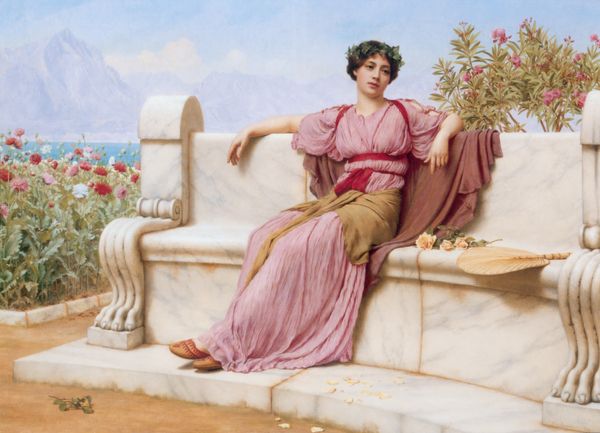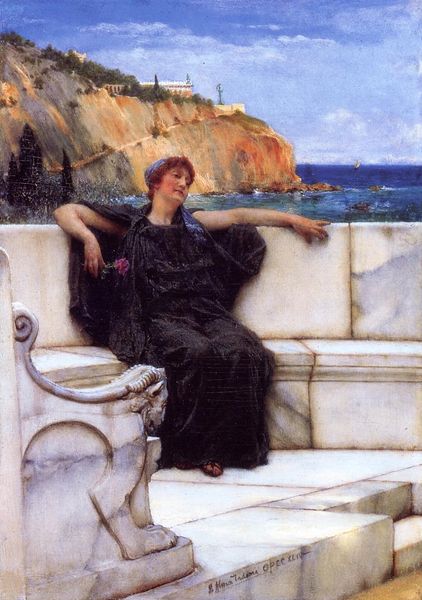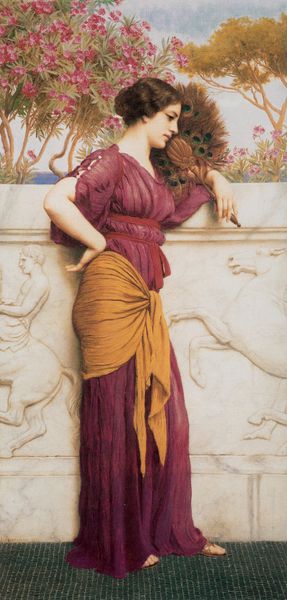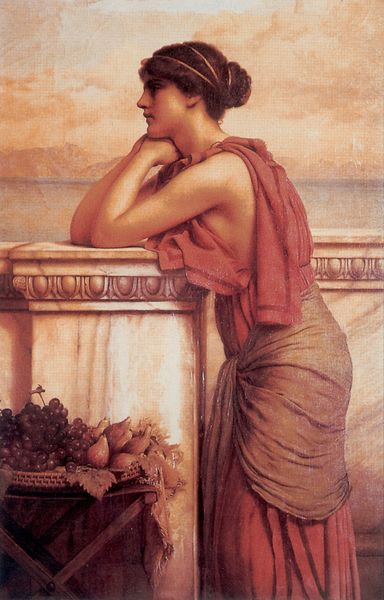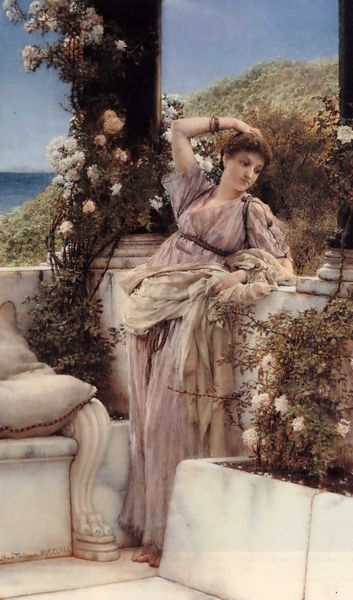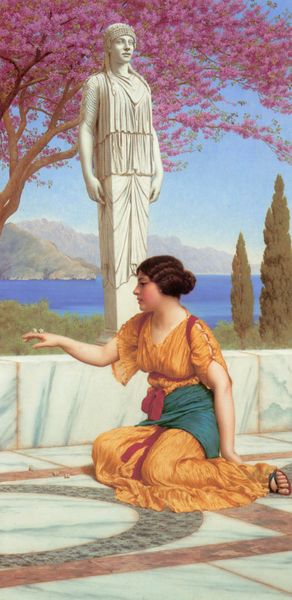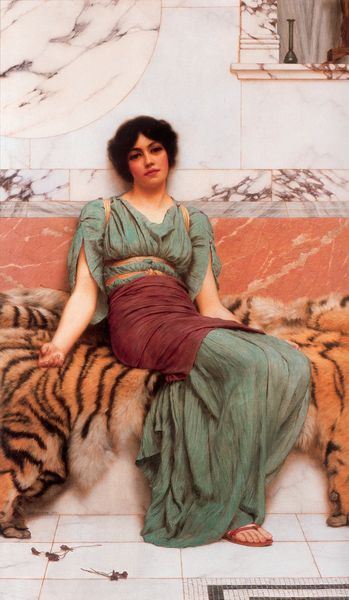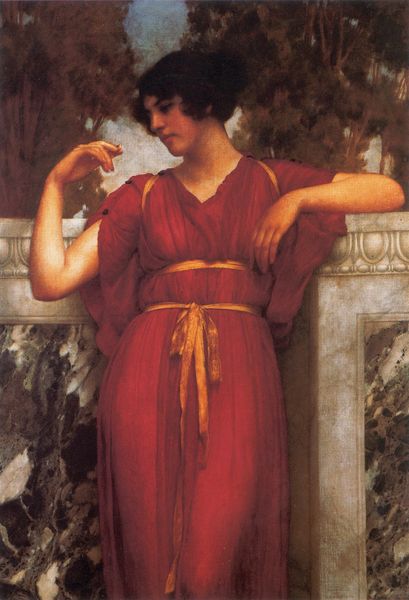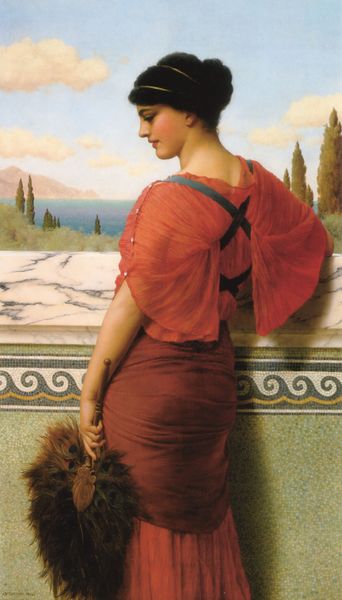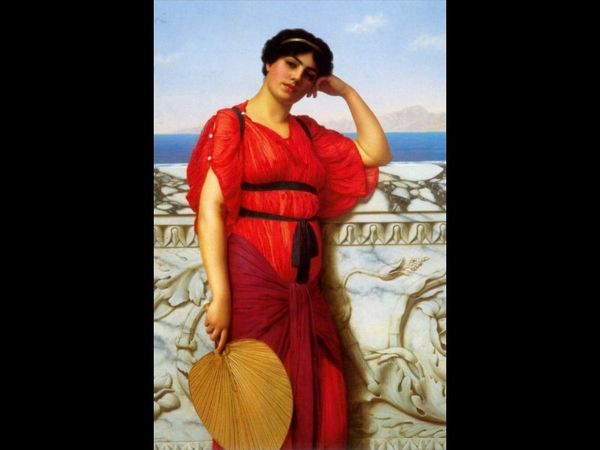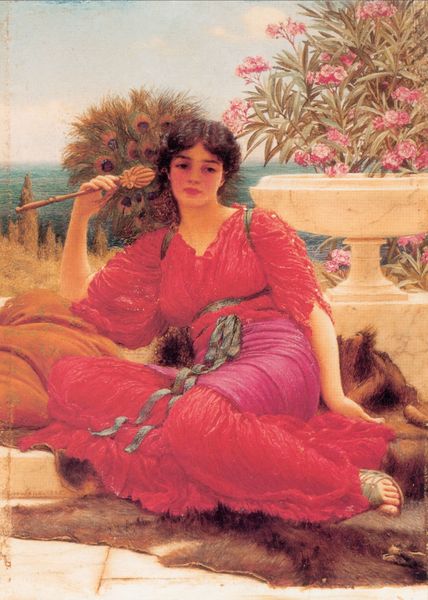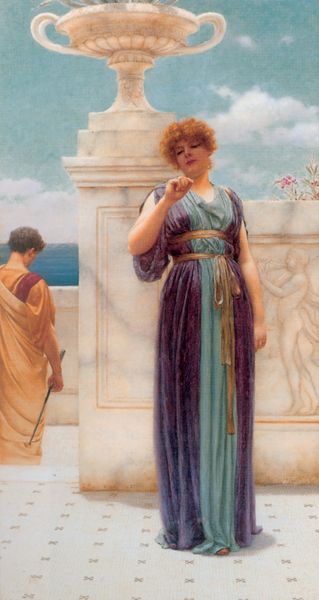
#
possibly oil pastel
#
oil painting
#
portrait reference
#
acrylic on canvas
#
animal portrait
#
animal drawing portrait
#
portrait drawing
#
lady
#
sitting
#
portrait art
#
fine art portrait
#
digital portrait
Copyright: Public domain
Curator: The ennui is palpable! The atmosphere is soaked in languor, wouldn’t you say? Editor: Indeed. What strikes me immediately is the figure’s posture. Completely relaxed, almost surrendering to the environment. Shall we contextualize the piece? This is “A Female Figure Resting (Dolce far Niente),” created by Lawrence Alma-Tadema in 1882. It's currently held at the Maas Gallery in London. Curator: Alma-Tadema always presents an idealized vision of antiquity, though it sometimes veers into fantasy. Take this female figure, for example. She embodies otium, leisure dedicated to aesthetic enjoyment, contemplation, and conversation, ideals coveted in Roman culture. Look at her clothing, an imagined pastiche of antique dress. Editor: Interesting, given the socio-political undercurrents. Alma-Tadema's paintings were enormously popular among the wealthy industrialists of Victorian England. Were these visions of leisure a form of escapism, or perhaps even aspirational in an era of relentless industrial expansion? Were patrons purchasing an idea of grace for a society rapidly changing and challenged? Curator: I suspect both. Though it's also fair to see deeper roots. The color, that deep claret, carries with it, don't you think, centuries of associations, from the robes of emperors and bishops to the hues associated with Bacchus himself? It’s a signal, that indulgence isn’t new; this isn’t about inventing a new aesthetic, it's about calling on traditions from ancient civilizations. Editor: Certainly the careful depiction of marble—look at how he renders light and shadow upon its surface—lends an aura of permanence and refinement, something beyond mere "dazzle" with consumer goods. I do believe though, that this particular visual language spoke to a desire for elevated cultural standing. It’s the role the painting played in society that adds complexity. Curator: It's easy to be cynical about the aspirations, but to me, these scenes retain an essential yearning for something beautiful, untroubled, outside of temporal reality. They represent an ideal which the patron wanted, and maybe one day still want. Editor: And in that yearning lies the fascinating paradox—using imagery of antiquity to negotiate the tensions of modernity. Alma-Tadema provided an elegant, timeless frame for his viewers to ponder their own place in history, a conversation we're continuing even now.
Comments
No comments
Be the first to comment and join the conversation on the ultimate creative platform.
